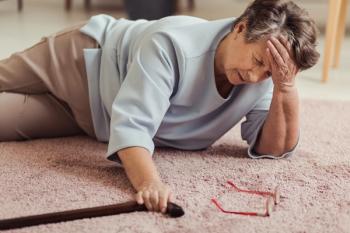
Five COPD Gender Differences Healthcare Executives Should Watch
Chronic obstructive pulmonary disease (COPD) affects women differently than men. Here are some of the biggest variations.
Chronic obstructive pulmonary disease (COPD) affects women differently than men. Here are some of the biggest variations:
1. Women have a more adverse response to smoking
Many studies suggest that women are more prone to the adverse effects of cigarette smoking, which is a major contributor to COPD.
Ohar“Hence, women often develop COPD at a younger age or with less smoking history,” says Jill Ohar, MD, a professor of medicine at Wake Forest University in Winston-Salem, North Carolina.
Similarly, women who start smoking in childhood experience a much greater decline in lung function than their male counterparts who started at similar ages.
“It has been conjectured that women have increased vulnerability to lung function because of the difference in the geometry of the airways between the two sexes,” Ohar says. “But I do not think anyone knows for sure.”
Making matters worse, women tend to find it harder to quit smoking than men, Ohar says. “They perceive more barriers than men.”
2. Women experience more decline as they age
Postmenopausal women also experience a more rapid loss of lung function. “Some studies propose that hormonal replacement may actually mollify the rate of decline in lung function in women with COPD, although controversy remains,” Ohar notes.
3. Women may face more adverse effects from inhalers
An important cause of severe obstruction in the setting of a modest smoking history is asthma and COPD coexistent in the same individual.
For inhalers, there is probably a sex difference, in that the dry powders “require a fair amount of inspiratory strength to nebulize the dry powders from the pellet up to a respirable particle size,” says Ohar, noting that about one-third of COPD patients, mostly women, have a suboptimal inspiratory flow rate.
4. Women with COPD decline more rapidly
Women are also more frequently hospitalized for COPD than men and die more rapidly, even though the percentage of women and men who have the disease is similar, says Ohar.
5. Men are diagnosed with COPD faster than women
Clinicians, especially older clinicians, are more likely to attribute coughing, sputum and shortness of breath to COPD in a man versus asthma in a woman. “Although unfounded, this notion still exists,” Ohar conveys. “But it lingers because women used to not smoke in the numbers that men did.”
Ohar says there is about a 20-year lag between starting smoking and the early stage of COPD. “About 90% of people smoking today started at age 20 or below,” she says. “Thus, in nearly all instances, you are not going to find COPD in a patient under the age of 40.”
Much of current COPD demographics are reflective of smoking habits 20 to 30 years ago, according to Ohar. “So now you are starting to see COPD in equal numbers among men and women,” she says.
Women also do not complain as frequently about coughing and sputum as men do, “probably because women tend to swallow sputum,” Ohar says. “But women complain more of shortness of breath and fatigue. So how women perceive their symptoms seems to be different than for men.”
Newsletter
Get the latest industry news, event updates, and more from Managed healthcare Executive.


















































